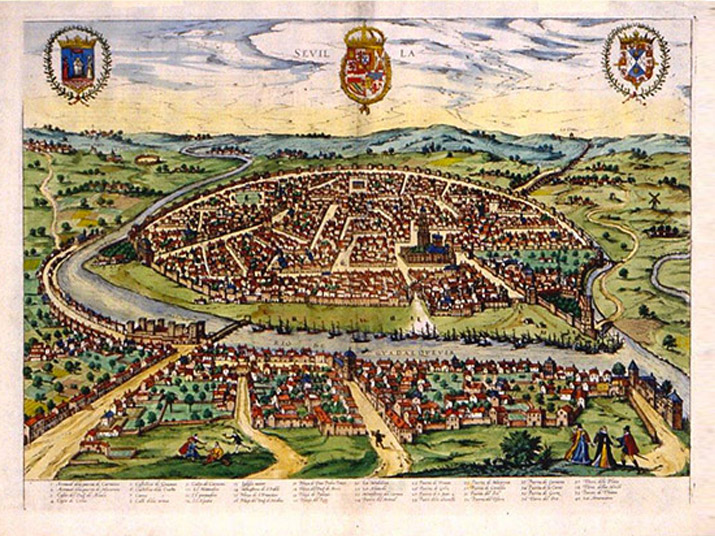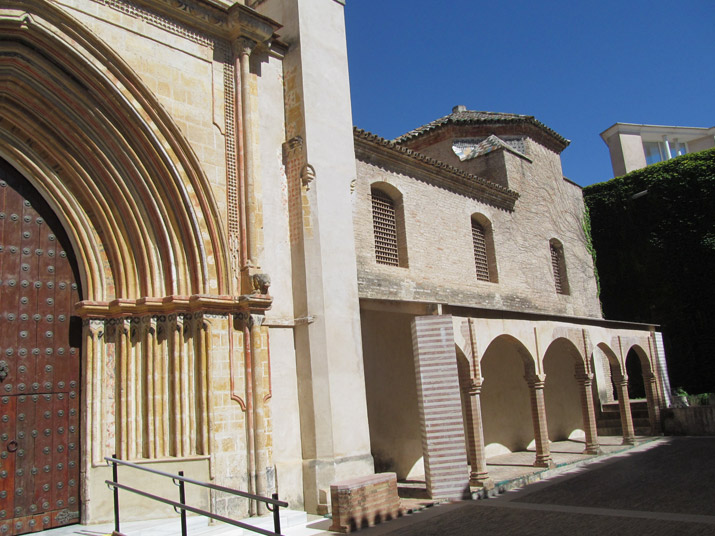On March 31, 1493, then Palm Sunday, Columbus and the ten Taínos arrived at Seville, shown below c. 1588 (Civitates Orbis Terrarum). They would have entered by the bridge over the Guadalquivir in the lower left (a predecessor to the present Puente de Isabel II), passing beside the large Castle of St. George, then an Inquisition headquarters (where a small exhibition about the former castle and Inquisition now sits). A nineteen-year-old Bartolomé de Las Casas was among the city’s onlookers who flocked to see them.

The city was celebrating Holy Week, with Christian pilgrims parading to reenact various Christian traditions. Given their polytheistic frame of reference, the Taínos may have interpreted Christ, the Virgin Mary, and Christian saints as additional spirits within a polytheistic framework.
Columbus likely lodged at the Monastery of Santa María de las Cuevas (shown below). Four of the Taínos became seriously ill with European diseases, and Columbus had to leave them in Seville when he departed for Barcelona. The friars in the monastery likely took care of them.

On or about Easter Sunday, Columbus received Queen Isabella and King Ferdinand’s letter ordering a second voyage. He prepared a memorandum summarizing recommendations for the Taíno homeland’s subjugation, advising that as many as two thousand volunteer colonists should be settled in three or four townships built about “Española.” He believed the lure of gold would fuel colonization and proposed that, for the first year, a colonist’s take should be half of that gathered. He also proposed that a church be built staffed with friars to convert the “Indians.”
